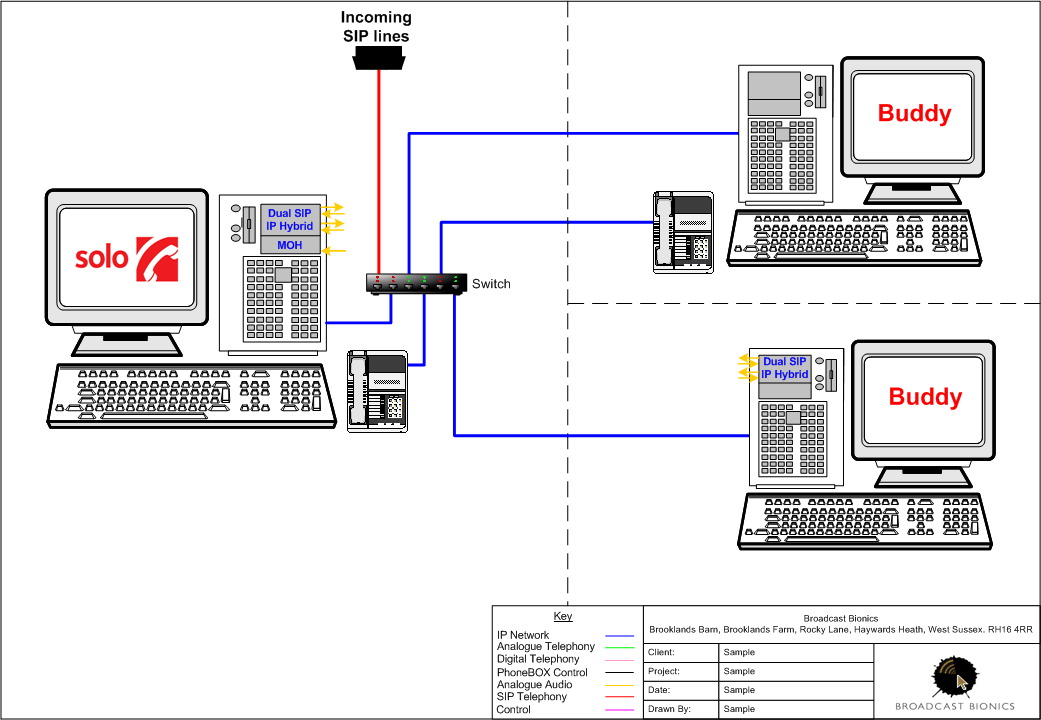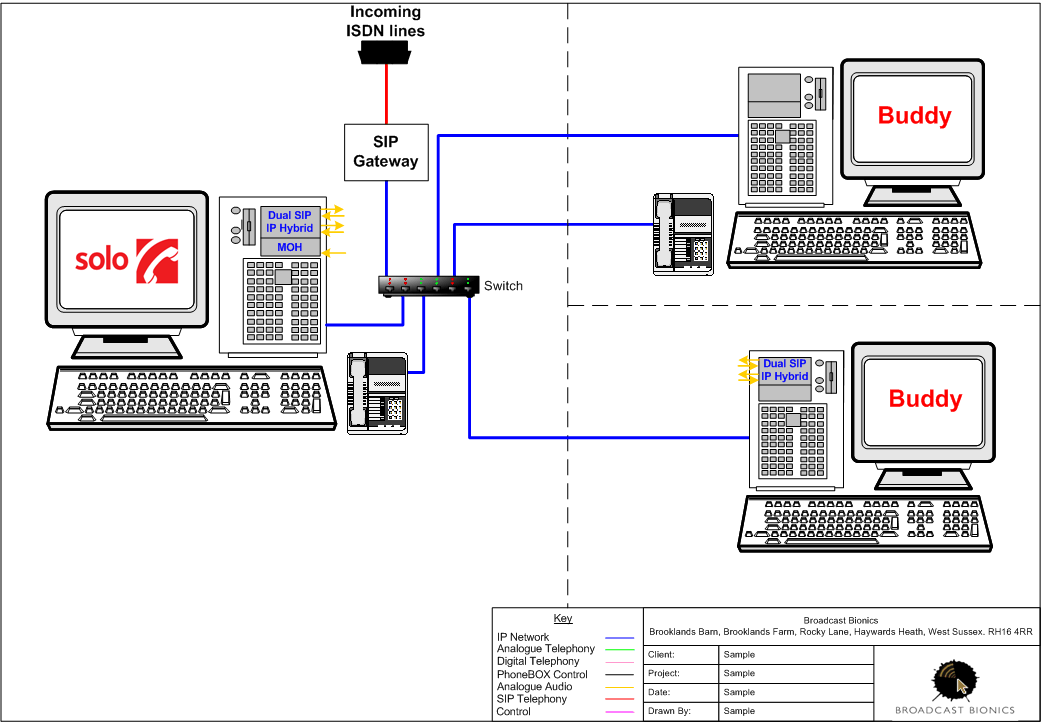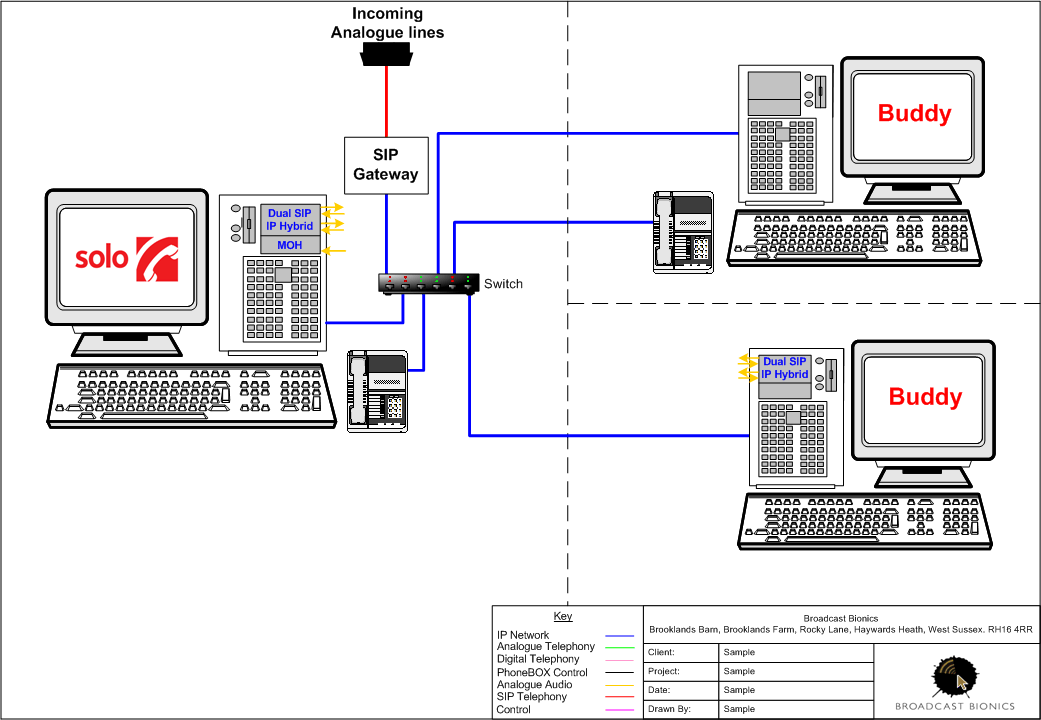Introduction
Solo is a call handling system which controls
SIP phone calls. The calls can be originated or answered on-screen from within Solo using a mouse or touchscreen. A full database of calls and caller information is maintained and details of each caller can be entered to be automatically recalled when they call in again. The caller's audio is heard through the soundcard of the PC or via a SIP handset if configured.
Solo can make and receive calls over SIP lines or, by the use of a SIP gateway, over ISDN or analogue lines.
Each main Solo machine can have up to 2 additional Solos connected to it. These are referred to as buddies and can control the same calls as the main Solo. They can optionally have independent audio devices of thier own, allowing calls to be routed through a soundcard on the main or buddy machines.
Requirements
Main Solo¶
- A SIP gateway or service. Solo will register with the gateway to make and receive calls.
- A Windows PC to run Solo on.
- A supported soundcard. With Solo 2.0 and above any WAVE or ASIO soundcard should work – but see our other tips for more information on this as better cards have lower latency.
- Optional – a Linksys handset to screen callers without using the mixing desk.
- Optional - Advantech GPI/O card for service ringing/device occupied outputs and answer and drop inputs.
Buddy
- A Windows PC to run Solo on.
- For a buddy with audio – a supported soundcard.
- For a buddy without audio – you will simply be controlling the calls on the main Solo.
- Optional – a Linksys handset to screen callers without using the mixing desk.
Minimum specification
- Microsoft Windows XP or above
- 2Ghz or faster processor
- 1GB RAM
- 10GB Hard disk space
- 1024x768 resolution
Solo Topology
The following 3 diagrams show the setup options for Solo as you can see they are almost the
same, the difference lies in the type of incoming lines you have, SIP, ISDN or Analogue.
Using a SIP provider

Incoming SIP lines from your SIP provider terminate directly in
Solo. Shown here you can see the Solo PC has a dual SIP IP Hybrid and Music on Hold and
the option for 2 buddies with audio.
Using ISDN lines and a SIP gateway¶

Incoming ISDN lines are received into your SIP Gateway, the
SIP output from your gateway then terminate directly in Solo. Shown here you can see the
Solo PC has a dual SIP IP Hybrid and Music on Hold and the option for 2 buddies with audio.
Using Analogue lines and a SIP gateway¶

Incoming Analogue lines are received into your SIP Gateway,
the SIP output from your gateway then terminate directly in Solo. Shown here you can see the
Solo PC has a dual SIP IP Hybrid and Music on Hold and the option for 2 buddies with audio.
Audio to sound desk
Ongoing connections to your sound desk are via the soundcard input/outputs to/from your PC.